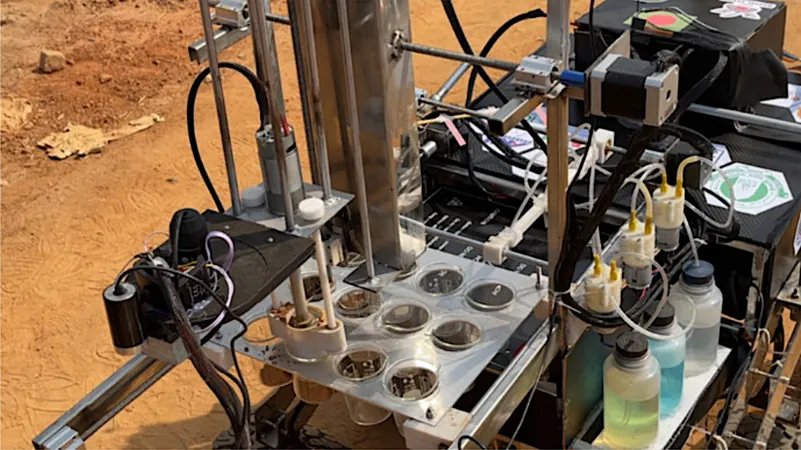
Revolutionary Rover Protocol Could Unveil Alien Life Secrets in Soil Samples!
2024-11-18
Author: Amelia
Introduction
The quest to determine whether life exists beyond Earth—or whether it has ever existed—relies heavily on sophisticated experimental studies. With numerous potential biosignatures to investigate, scientists are facing challenges related to time, resources, and mobility when analyzing extraterrestrial environments.
The Need for Efficient Detection
In light of these constraints, achieving precise and unambiguous detection of life markers is critical. This groundbreaking study investigates a new approach to extraterrestrial life detection, introducing an efficient protocol capable of delivering reliable life detection outcomes based on chemical analyses conducted within resource-limited scenarios.
Innovative Strategy
Unlike many current frameworks that focus predominantly on detecting biomolecules, our research aims to provide an innovative yet simpler strategy. We posit that integrating multiple biomolecular detection methods can enhance operational efficiency while adhering to stringent mission budgets and complexities.
Introducing MBLDP-R
The core of this study is the development of the Rapid Multiple Biomolecules-Based Life Detection Protocol (MBLDP-R), specifically designed for soil sample analysis using a rover subsystem deployed during planetary exploration missions. By utilizing artificial biomolecule samples and recreating extraterrestrial conditions, we detail the protocol's comprehensive implementation and operational capabilities.
Identification of Biomolecules
We initiate our investigation by identifying vital biomolecules such as lipids, proteins, carbohydrates, nucleic acids, ammonia, and pigments. A weighted qualitative scoring system is subsequently utilized to determine the most effective testing methods for our selected biomolecules. These serve as operational analogues, illustrating the protocol's capacity for in-situ analysis and decision-making.
Results and Findings
The protocol showcases impressive results: 1. **High Prediction Accuracy**: The MBLDP-R achieved an average f1-score of 98.65% (macro) and 90.00% (micro), demonstrating its potential for highly accurate classification of samples. 2. **Robust ROC Performance**: The area under the Receiver Operating Characteristic (AUC-ROC) curve indicates a remarkable accuracy of 92% in predicting sample categories, with specific success rates of 97% for extant species, 88% for extinct, and 92% for non-placed lifeforms. 3. **Rapid Analysis**: Time efficiency is another hallmark of the protocol, which records an average sample analysis time of just 17.60 minutes, making it a swift solution for detecting biosignatures.
Conclusion
This pioneering research not only contributes significantly to the field but also lays foundational knowledge for future investigations aimed at designing scientific frameworks tailored for mission-specific objectives under resource constraints. It serves as a crucial reference for evaluating similar extraterrestrial exploration systems.
Future Implications
As the search for extraterrestrial life continues, this multiple biomolecules-based rapid life detection protocol is poised to play a vital role in advancing our understanding of life's potential on other planets. Could this be the key that unlocks the secrets of the universe? Stay tuned as the adventure unfolds!









 Brasil (PT)
Brasil (PT)
 Canada (EN)
Canada (EN)
 Chile (ES)
Chile (ES)
 España (ES)
España (ES)
 France (FR)
France (FR)
 Hong Kong (EN)
Hong Kong (EN)
 Italia (IT)
Italia (IT)
 日本 (JA)
日本 (JA)
 Magyarország (HU)
Magyarország (HU)
 Norge (NO)
Norge (NO)
 Polska (PL)
Polska (PL)
 Schweiz (DE)
Schweiz (DE)
 Singapore (EN)
Singapore (EN)
 Sverige (SV)
Sverige (SV)
 Suomi (FI)
Suomi (FI)
 Türkiye (TR)
Türkiye (TR)